Artificial intelligence (AI) and machine learning (ML) are no longer new to agriculture, but their full potential is still unfolding. Lemberg Solutions is bringing data and AI together with a vision-based solution for pig farming to help growers and enterprises make the tough work that needs to be done every week much easier and much faster.
As the global population grows, the farming and agriculture industry faces increasing pressure to produce more food efficiently and sustainably. According to the UN Food and Agriculture Organization (FAO), agricultural production must increase by 60% by 2050 to meet the demands of a projected 9.7 billion people. The other challenges of modern agriculture include:
- increasing consumer demands;
- environmental risks;
- fast-changing weather conditions;
- limited water resources in many agricultural areas;
- timing crop sales amid constantly fluctuating prices;
- high production and labor costs;
- lack of skilled workers.
Technology, such as computer vision and machine learning in agriculture, is stepping in to meet this challenge, helping farmers improve precision, scalability, and efficiency in their operations. The integration of computer vision and automation into traditional farming practices has led to significant improvements in agriculture, driven by cutting-edge computer vision and AI technologies. The current state of AI in agriculture holds promise for increased agricultural productivity and economic growth, while also offering potential to address important global issues, such as food security and sustainability.
Let’s explore real-world examples of successful applications of AI computer vision in agriculture and consider how they can be adapted and scaled to meet your business needs.
Computer vision algorithms to support decision-making in pig farming

Issue
In farming, routine livestock monitoring involves physically demanding tasks each week, including weighing animals and checking for signs of disease. For example, in traditional farm settings, weighing pigs typically requires moving them out of their pens and guiding them onto a scale. This process is both physically demanding for workers and stressful for the animals. Such handling can disrupt the pigs' environment and contribute to elevated stress levels, which may affect their well-being and even impact meat quality.
Technology
Computer vision represents a valuable tool for helping pig farmers to make decisions. Lemberg Solutions designed their embedded vision-based solution for Barkom Ltd. to automate and improve their overall welfare. For the project, experts collected a training dataset consisting of pig images paired with their corresponding weights. These image-weight associations were used to develop technology based on trained convolutional neural networks. To increase accuracy and enable reliable performance in low-light conditions, the technology incorporated two upgraded cameras. The first is a Stereolabs passive stereo vision camera that operates in the RGB spectrum. The second one is an Intel RealSense D435, which captures 3d scans in the infrared spectrum. After constructing the necessary hardware equipped with computer vision technology, developers designed a weight recognition algorithm that combined non-iterative neural networks with a custom image recognition solution. This approach achieved nearly 98% accuracy on manually cleaned and pre-processed data.
Fun fact: During testing, pigs fell asleep on the scales, and even stepped on them in groups — all while light reflections distorted the camera feed!

Opportunities
There’s strong potential to expand computer vision capabilities to assess a broader range of pig health and condition indicators. A further development of the software and mobile unit into a fixed monitoring system could enable continuous tracking of a group of pigs' growth, allowing farm managers to detect health or feeding issues earlier. Additionally, enhancing the algorithm to accurately estimate weight from various heights would make the device more adaptable to diverse conditions.
Vision-based crop yield prediction

Issue
Yield estimation is a critical, yet traditionally unreliable part of agricultural planning. For farm operators, inaccurate forecasts can lead to poorly allocated labor, wasted fertilizer, excessive transportation costs, or even unharvested crops. For the broader market, inconsistent data disrupts commodity pricing and the flow of supply chains. At the same time, yields are influenced by a range of unpredictable factors, including pests, disease outbreaks, soil conditions, and climate fluctuations. Without accurate and timely insights, farmers are left making high-stakes decisions in the dark, while investors face unpredictable returns.
Technology
Vision-based yield forecasting is closing this gap. For example, MangoNet designed its deep learning architecture for mango detection and counting. Trained on over 11,000 pixel-labeled image patches from RGB cameras, and tested on an additional 1,500, the system processes mango yield predictions through connected component analysis of segmented outputs. The model was trained in two steps: first on images with mangoes, then on a wider set of data to help it learn more general patterns. The result: scalable, field-ready models that bring AI precision to fruit counting and yield projection.
Opportunities
For large-scale farms, accurate yield forecasting is a strategic asset. Furthermore, it provides opportunities for other kinds of agricultural crops and enables smarter planning across labor, transport, resource allocation, and harvesting automation. For agri-tech investors, this technology represents a clear ROI pathway: reduced waste, improved margins, and data-driven performance insights that scale across crops and geographies.
Drone-based imaging disease and pest detection system
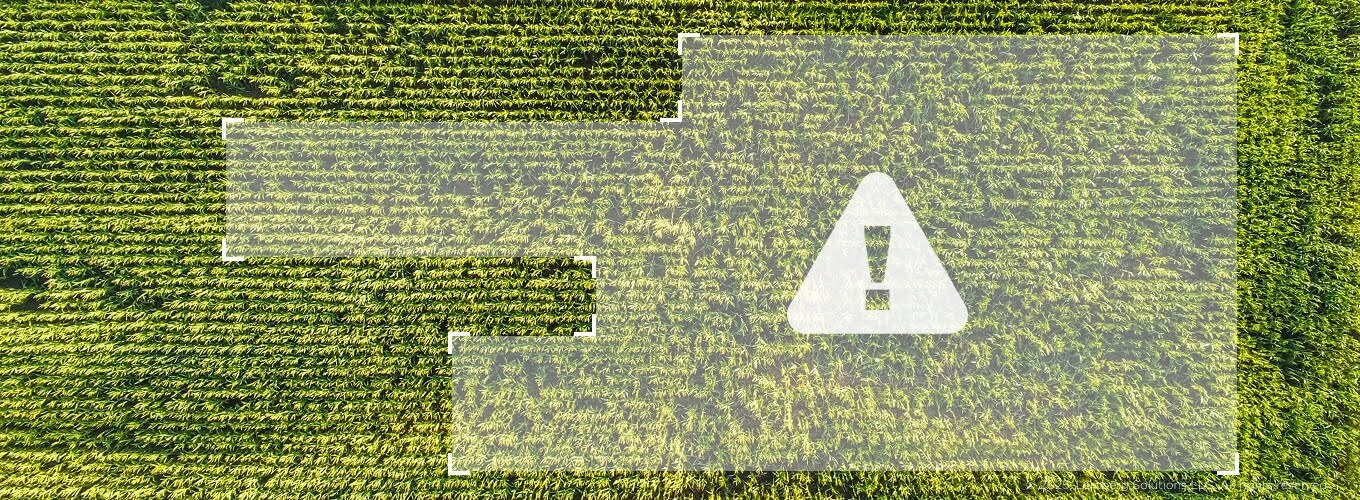
Issue
Early pest and disease detection remains one of the most cost-intensive and unpredictable aspects of crop management. Traditionally reliant on routine field scouting and agronomist visits, farmers often face delays in diagnosis that can result in significant yield losses.
Technology
Computer vision in agriculture is transforming how farmers monitor crop health. See how this works in practice at Paulman Farms in Sutherland, Nebraska. Using a drone-based imaging system powered by IBM’s computer vision technology, farmer Roric Paulman captures aerial footage and close-up plant images across 10,000 acres — all accessible through a unified mobile platform.
A drone captures footage of cornfields while an AI-powered app analyzes both aerial and close-up images to detect signs of stress, disease, or pest infestation. The system uses image recognition models to match visual patterns with known crop issues. Instead of waiting days for an agronomist, the grower can now snap a photo and get instant feedback on what's affecting the plants directly from a smartphone.
The platform combines drone or mobile imagery with AI models trained to recognize visible symptoms in crops. It can identify pests, diseases, nutrient deficiencies, and stress indicators, helping farmers take action faster, often before the problem spreads.
Opportunities
AI-powered pest and disease detection unlocks significant value for commercial agriculture and presents further opportunities for development. The platform should be further adjusted for variable lighting, leaf overlap, or early-stage infections that are visually subtle. Furthermore, it would be great to adjust the datasets to specific regions to account for local pests and disease strains.
Monitoring dairy cow health with computer vision-based body condition scoring
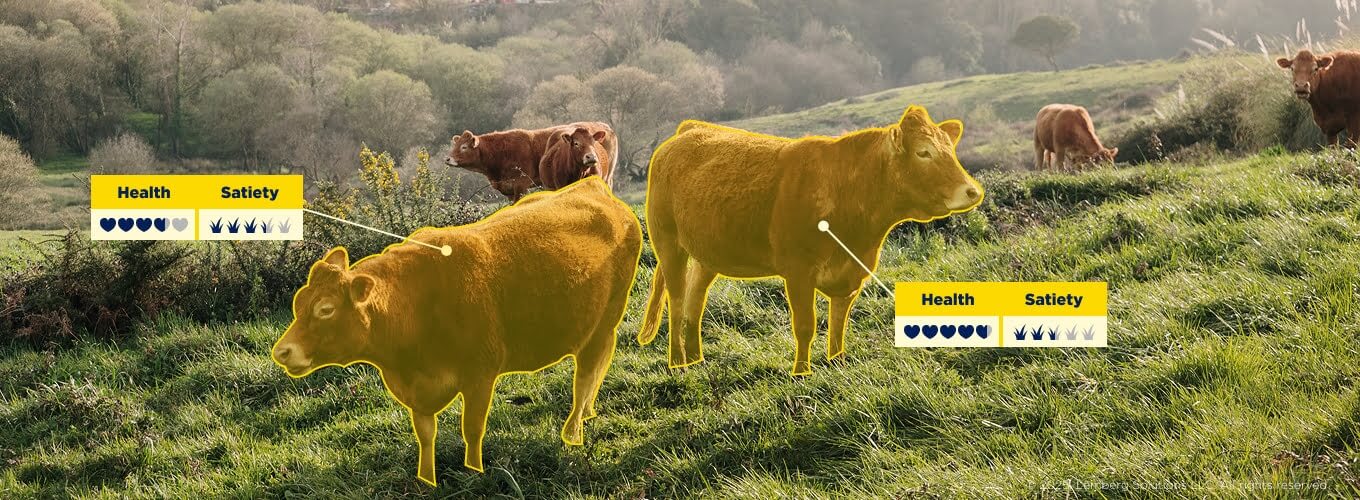
Issue
Body condition scoring (BCS) is a critical metric for assessing the energy reserves and overall health of dairy cows. Deviations from the optimal BCS range can lead to serious outcomes, including reduced milk production and reproductive challenges, and even metabolic disorders in over-conditioned cows. Yet, despite its importance, routine BCS monitoring remains inconsistently applied on commercial farms.
Technology
Recent developments in computer vision and machine learning in agriculture and farming have led to the emergence of automated BCS systems that simplify this process. These systems typically use overhead cameras positioned at the exit of the milking parlour to capture daily video footage of cows. Trained algorithms then assess each animal’s body condition based on visual markers.
This technology enables continuous, objective, and less labor-intensive monitoring of cow health. For instance, systems like DeLaval BCS have demonstrated the ability to detect subtle daily changes in BCS. This tech approach significantly outperforms traditional manual scoring and positively affects the wealth condition of cows.
Opportunities
With continued training of AI models across diverse cow populations and production systems, these tools have the potential to become core components of smart dairy farm management. Future development of BCS systems could leverage multi-angle or 3D imaging to improve accuracy regardless of cow posture or lighting conditions. For now, hybrid approaches that combine manual and automated methods enable farm operators to benefit from the efficiency of computer vision in agriculture while ensuring that critical decisions are supported by reliable, field-tested data.

AI-powered spraying system that brings precision to weed control
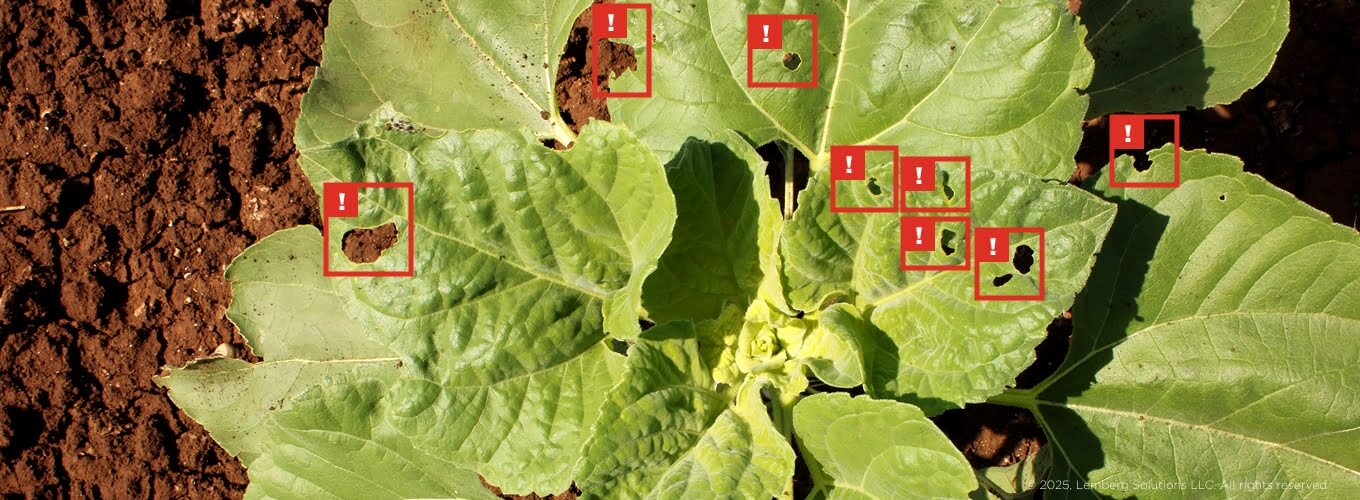
Issue
Traditional spraying methods apply herbicides uniformly across entire fields, regardless of whether weeds are actually present. This practice results in excessive chemical use, higher input costs, and unnecessary environmental exposure. For large-scale farms, the inefficiency scales quickly, both economically and ecologically.
Technology
John Deere, through its acquisition of Blue River Technology, has developed See & Spray, an AI-powered robotic spraying system that brings precision to weed control. Using high-resolution cameras and real-time computer vision, the system identifies individual weeds among crops as the machine moves through the field. Once detected, micro-targeted nozzles apply herbicide only to the unwanted plants, leaving the crops untouched. The entire process is automated and optimized in real-time, utilizing deep learning algorithms trained to distinguish between plant types under varying conditions.
Opportunity
This shift from blanket to precision spraying offers tangible benefits for both farm operations and the environment. Minimizing chemical exposure to soil and crops helps maintain biodiversity and soil health. As AI-driven spraying systems continue to evolve, they are laying the groundwork for smarter, more efficient crop protection, where inputs are applied only when and where they are truly needed.
Vision-based quality control for apple grading and sorting
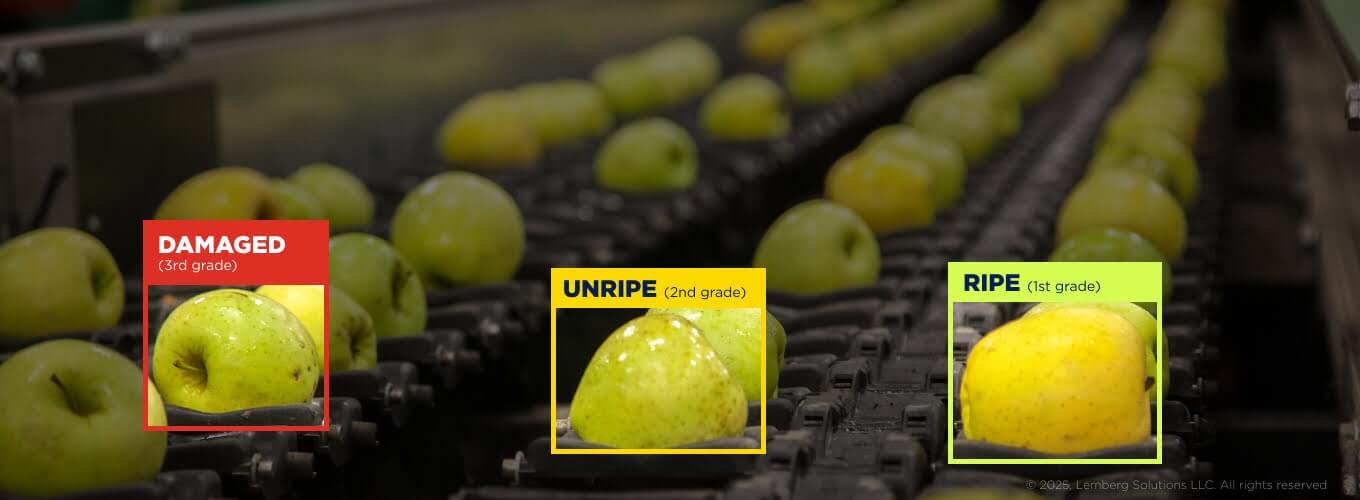
Issue
Manual inspection of agricultural produce is often inconsistent, subjective, and time-consuming. This results in overlooked defects, increased post-harvest losses, and missed opportunities to maximize product value across various sales channels. For supply chains handling perishable goods, early detection of surface defects is crucial to maintaining shelf life, minimizing waste, and meeting market expectations.
Technology
Computer vision and machine learning in agriculture offer a more reliable and scalable alternative to manual sorting. In one example, engineers developed an apple grading system using RGB imagery to analyze surface color, texture, and edge features. Images were converted to HSV color space, and the V-channel was binarized to distinguish defects. Rotten areas were identified through connected component analysis, and a logical operation was used to combine all features into a final classification. Apples with zero white-pixel area in the final image were classified as defect-free. This automated process provides consistent and objective grading that can be scaled for large volumes.
Opportunities
By integrating vision-guided systems into post-harvest processing, producers and distributors can improve quality assessment accuracy while minimizing food loss. These systems enable early identification of defects, better alignment with market quality standards, and intelligent routing of produce to the most appropriate sales channels — from premium markets to processing lines. As demand for high-quality, sustainable produce increases, automated grading solutions present a compelling opportunity to enhance both efficiency and profitability across the agricultural value chain.
Smart water and soil management in agriculture
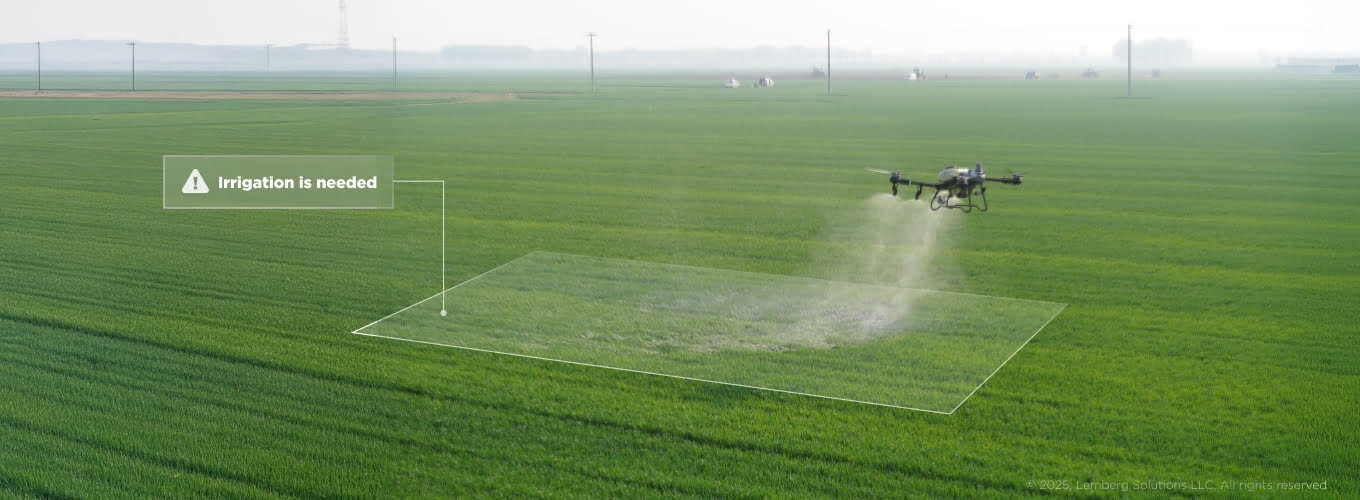
Issue
Water scarcity and increasing drought risk pose significant challenges to global agriculture. Inefficient irrigation not only wastes valuable water resources but also reduces crop yields and contributes to long-term soil degradation. Traditional methods of assessing when and how much to irrigate often rely on manual observation or outdated scheduling, which fail to account for spatial variability across large fields.
Technology
Modern remote sensing and computer vision technologies are changing how farmers manage water. For example, a study in northeast Spain used the DISPATCH method, combining microwave and optical remote sensing data to generate detailed soil moisture maps. These maps are then used to estimate irrigation needs with high accuracy, optimizing water usage and improving yield outcomes. In southern Africa’s Mutale River catchment, UAV imagery in the visible-NIR spectrum, combined with vegetation indices and regression analysis, enabled farmers to plan irrigation across seasons and crop types with measurable success.
Opportunities
Smart water and soil management solutions, powered by remote sensing and AI, enable more targeted irrigation strategies, thereby reducing water waste and enhancing crop productivity. Farmers can now make data-driven decisions about when and where to irrigate, using soil and crop-specific insights rather than general schedules. These technologies not only support higher yields and input savings but also play a crucial role in mitigating droughts and promoting long-term sustainability.
Partner with Lemberg Solutions to build a computer vision solution for your farm
Computer vision is transforming agriculture, as evidenced by advanced yield prediction, livestock monitoring, and automated quality control. However, the real power of these technologies lies in building solutions tailored to your farm’s unique challenges. At Lemberg Solutions, we specialize in developing end-to-end computer vision systems for agriculture, from IoT integration and custom software to wearable devices and intelligent farm management platforms. Whether you need to optimize daily operations, reduce manual labor, or gain real-time insights into your crops and livestock, we’re here to help. Let’s build the future of farming together — connect with Lemberg Solutions to bring smart, scalable vision technology to your agribusiness.

FAQs
How is computer vision helpful in agriculture?
Computer vision enables automation and precision in agriculture by allowing systems to visually monitor crops, livestock, and equipment. It automatizes tasks such as plant disease detection, yield forecasting, livestock tracking, automated fruit grading, and weed identification.
What are the possible areas in agriculture where computer science can be used?
Computer science supports a wide range of agricultural areas, including precision farming, crop modeling, smart irrigation, soil analysis, disease and pest detection, yield prediction, and supply chain optimization. The integration of AI, machine learning, IoT, and big data analytics continues to expand the boundaries of what is possible in modern farming.
How can data science help grow the agriculture sector?
Data science enables farmers to make informed decisions by analyzing vast amounts of data from sensors, satellites, weather models, and historical records. It enables predictive analytics for yield, pricing, and climate impact; optimizes resource usage like water and fertilizer; and supports risk management in supply chains.
How does computer vision in agriculture work?
Computer vision in agriculture involves capturing images or video from drones, cameras, or sensors and analyzing them using AI models trained to recognize patterns (such as crop health, livestock movement, or signs of disease). These systems translate visual information into actionable insights, automating labor-intensive tasks and enhancing accuracy across farm operations.

